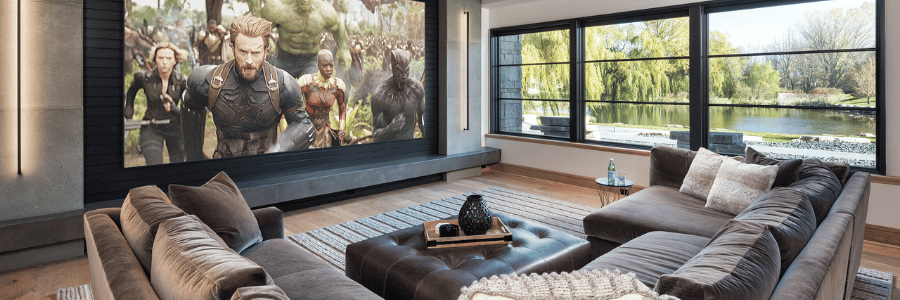Designing an ideal home theater or media room requires meticulous planning, with various elements coming together to create the perfect space for entertainment. Among these elements, window selection is crucial, as it significantly impacts the room’s functionality and comfort. The right windows can enhance your viewing experience by effectively managing light, sound, and temperature. Here’s a comprehensive guide to help you choose and optimize windows for your home theater or media room, ensuring an unparalleled viewing environment.
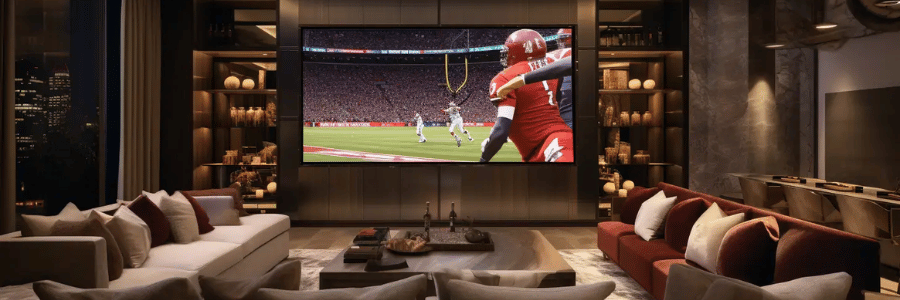
Control Natural Light
Natural light can be a significant distraction in home theaters and media rooms, causing glare on screens and washing out colors. To control natural light, consider the following window options:
- Blackout Curtains or Shades: These are essential for any home theater or media room. Blackout curtains or shades can completely block out external light, ensuring a dark, cinema-like atmosphere. Look for options that fit tightly to the window frame to prevent light leaks.
- Tinted Windows: Tinted windows can reduce the amount of light entering the room, minimizing glare without completely darkening the space. They can be particularly useful if you prefer some natural light in the room when it’s not in use as a theater.
- Window Films: UV-blocking window films can protect your furnishings and electronics from sun damage while reducing glare. These films are a good option if you want to maintain a clear view outside without compromising on light control.
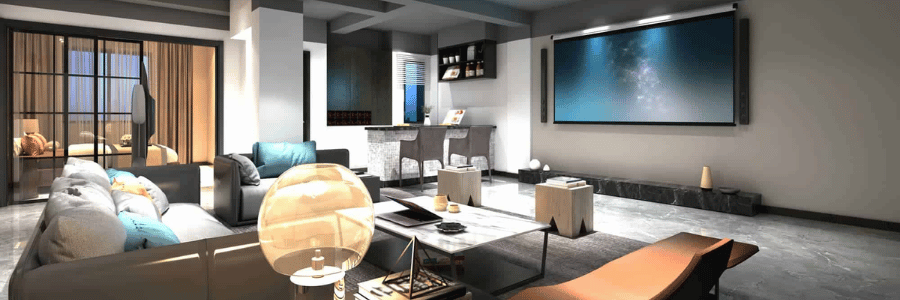
Enhance Sound Insulation
Sound insulation is crucial in home theaters and media rooms to keep external noise out and prevent sound leakage. The right windows can significantly improve your room’s acoustics:
- Double or Triple Glazing: Windows with double or triple glazing provide excellent sound insulation. The multiple layers of glass with insulating gas in between can reduce noise transmission, ensuring a quieter environment.
- Laminated Glass: Laminated glass has a layer of plastic between two glass panes, offering enhanced soundproofing. This type of glass is effective at dampening low-frequency sounds, making it ideal for media rooms.
- Acoustic Window Inserts: These are additional panes that can be fitted inside your existing windows to improve sound insulation. They are a cost-effective solution if replacing windows is not an option.
Improve Energy Efficiency
Maintaining a comfortable temperature in your home theater or media room is essential for an enjoyable viewing experience. Energy-efficient windows can help regulate temperature and reduce energy costs:
- Low-E Glass: Low-emissivity (Low-E) glass has a special coating that reflects infrared and ultraviolet light. This helps keep the room warm in the winter and cool in the summer, reducing the need for additional heating or cooling.
- Insulated Frames: Window frames with good insulation properties, such as vinyl or fiberglass, can further enhance energy efficiency. These materials help prevent heat transfer, maintaining a stable room temperature.
- Proper Sealing: Ensure that windows are properly sealed to prevent drafts. Weatherstripping and caulking can help eliminate gaps and improve insulation.
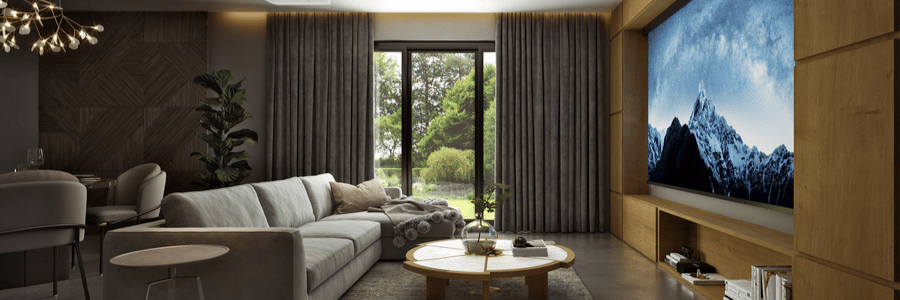
Consider Aesthetic and Design
While functionality is paramount, the aesthetic appeal of your windows also plays a role in the overall ambiance of your home theater or media room:
- Minimalist Frames: Opt for window frames with a sleek, minimalist design that won’t distract from your viewing experience. Thin frames maximize the glass area, providing a modern look and better views when desired.
- Custom Window Treatments: Customize window treatments to match the room’s décor. Motorized shades or curtains can add a touch of luxury and convenience, allowing you to control light levels with the touch of a button.
- Complementary Colors: Choose window treatments and frames in colors that complement the room’s color scheme. Darker shades can enhance the theater feel, while neutral tones can blend seamlessly into the background.

Plan for Flexibility
Flexibility in light control is essential for multi-purpose media rooms that may also serve as living spaces or entertainment areas:
- Layered Window Treatments: Consider using a combination of window treatments, such as blinds and curtains, to offer varying levels of light control. This allows you to adjust the ambiance based on the activity.
- Smart Home Integration: Integrate window treatments with smart home systems for easy control. Automated shades can be programmed to close during movie time and open when the room is used for other purposes.
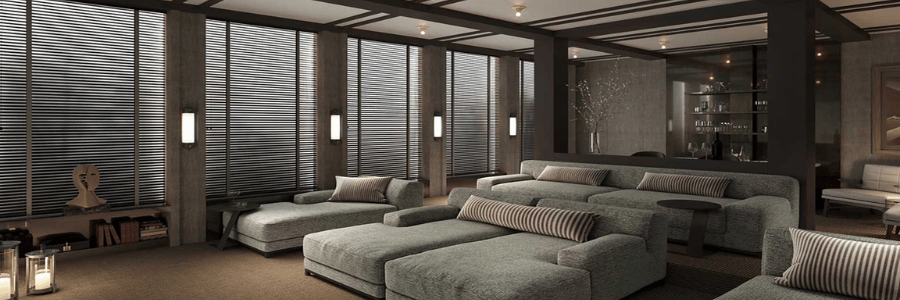
Conclusion
Optimizing your window choices for home theaters and media rooms is key to creating the ultimate viewing environment. By focusing on natural light control, sound insulation, energy efficiency, aesthetics, and flexibility, you can design a space that enhances your entertainment experience. Whether you’re watching a blockbuster movie or hosting a game night, the right windows will ensure your media room is comfortable, functional, and visually appealing. Embrace these strategies to achieve a perfect balance between performance and design, creating a home theater or media room that meets all your needs.

